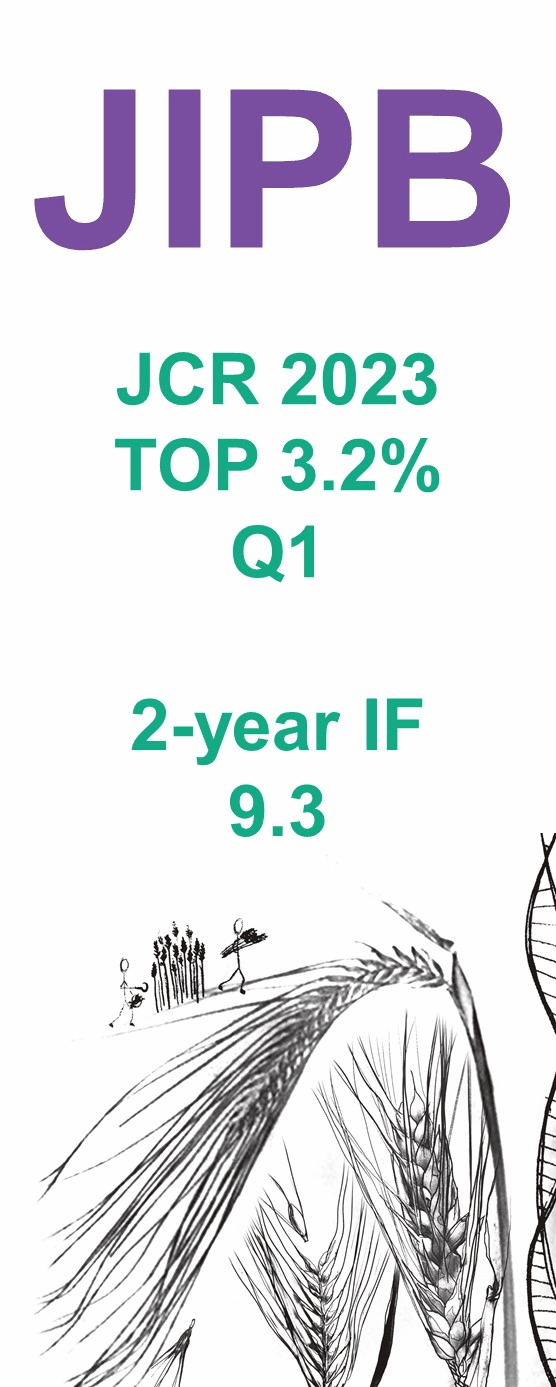-
Max Planck Institute for Chemical Ecology
Hans-Knöll-Straße 8
D-07745 Jena
Germany
Tel: +49 3641 571101; Fax: +49 3641 571102
E-mail: baldwin@ice.mpg.de
http://www.mpg.de/421027/chemische_oekologie_wissM
Area of expertise: Plant-herbivore interactions; direct and indirect defenses; tolerance responses; molecular mechanisms of stress resistance and tolerance; seed germination; jasmonate signaling; pollination biology; inducible secondary metabolism
Selected Publications:For more publications please visit:
http://www.ice.mpg.de/ext/hopa.html?pers=iaba2016&d=itb&li=itb&pg=publ
Li, J., Halitschke, R., Li, D., Paetz, C., Su, H., Heiling, S., Xu, S., and Baldwin, I. T. (2021). Controlled hydroxylations of diterpenoids allow for plant chemical defense without autotoxicity. Science 371: 255-260.
Zou, Y., Li, R., and Baldwin, I. T. (2020). ZEITLUPE is required for shade avoidance in the wild tobacco Nicotiana attenuata. J. Integr. Plant Biol. 62: 1341-11351.
Guo, H., Halitschke, R., Wielsch, N., Gase, K., and Baldwin, I. T. (2019). Mate selection in self-compatible wild tobacco results from coordinated variation in homologous self-incompatibility genes. Curr. Biol. 27: 2020-2030.
Valim, H., McGale, E., Yon, F., Halitschke, R., Fragoso, V., Schuman, M. C., and Baldwin, I. T. (2019). The clock gene TOC1 in shoots, not roots, determines fitness of Nicotiana attenuata under drought. Plant Physiol. 181: 305-318.
Li, R., Schuman, M. C., Wang, Y., Cortés Llorca, L., Bing, J., Bennion, A., Halitschke, R., and Baldwin, I. T. (2018). Jasmonate signaling makes flowers attractive to pollinators and repellant to florivores in nature. J. Integr. Plant Biol. 60: 190-194.
Wang, M., Wilde, J., Baldwin, I. T., and Groten, K. (2018). Nicotiana attenuata's capacity to interact with arbuscular mycorrhiza alters its competitive ability and elicits major changes in the leaf transcriptome. J. Integr. Plant Biol. 60: 242-261.
Xu, S., Brockmoeller, T., Navarro-Quezada, A., Kuhl, H., Gase, K., Ling, Z., Zhou, W., Kreitzer, C., Stanke, M., Tang, H., Lyons, E., Pandey, P., Pandey, S. P., Timmermann, B., Gaquerel, E., and Baldwin, I. T. (2017). Wild tobacco genomes reveal the evolution of nicotine biosynthesis. Proc. Natl. Acad. Sci. USA 114: 6133-6138.
Yon, F., Kessler, D., Joo, Y., Cortés Llorca, L., Kim, S.-G., and Baldwin, I. T. (2017). Fitness consequences of altering floral circadian oscillations for Nicotiana attenuata. J. Integr. Plant Biol.59: 180-189.
Yon, F., Kessler, D., Joo, Y., Kim, S.-G., and Baldwin, I. T. (2017). Fitness consequences of a clock pollinator filter in Nicotiana attenuata flowers in nature. J. Integr. Plant Biol. 59: 805-809.
Alagna, F., Kallenbach, M., Pompa, A., De Marchis, F., Rao, R., Baldwin, I. T., Bonaventure, G., and Baldoni, L. (2016). Olive fruits infested with olive fly larvae respond with an ethylene burst and the emission of specific volatiles. J. Integr. Plant Biol. 58: 413-425.
Herden, J., Meldau, S., Kim, S.-G., Kunert, G., Joo, Y., Baldwin, I. T., and Schuman, M. C. (2016). Shifting Nicotiana attenuata's diurnal rhythm does not alter its resistance to the specialist herbivore Manduca sexta. J. Integr. Plant Biol. 58: 656-668.
Baldwin, I. T. (2015). Plant science: Rediscovering the bush telegraph. Nature 522: 282-283.
Santhanam, R., Luu, V. T., Weinhold, A., Goldberg, J. K., Oh, Y., and Baldwin, I. T. (2015). Native root-associated bacteria rescue a plant from a sudden-wilt disease that emerged during continuous cropping. Proc. Natl. Acad. Sci. USA 112: E5013-E5020.
Schäfer, M., Meza Canales, I. D., Navarro-Quezada, A., Brütting, C., Radomira, V., Baldwin, I. T., and Meldau, S. (2015). Cytokinin levels and signaling respond to wounding and the perception of herbivore elicitors in Nicotiana attenuata. J. Integr. Plant Biol. 57:198-212.
Baldwin, I.T. (2014). Ecology in the genomics era of a degraded planet. eLife 3: e02394
Fragoso, V., Rothe, E., Baldwin, I.T., and Kim, S.G. (2014). Root jasmonic acid synthesis and perception regulate folivore-induced shoot metabolites and increase Nicotiana attenuata resistance. New Phytol doi:10.1111/nph.12747
Gulati, J., Baldwin, I.T., and Gaquerel, E. (2014). The roots of plant defenses: Integrative multivariate analyses uncover dynamic behaviors of gene and metabolic networks of roots elicited by leaf herbivory. Plant J 77: 880–892
Jassbi, A.R., Miri, R., and Baldwin, I.T. (2014) Comparative hydrodistillation and headspace SPME-GC-MS analysis of volatile constituents of roots and shoots of Artemisia annua and Artemisia sieberi. Chem Nat Compd 49: 1148–1153
Kumar, P., Pandit, S.S., Steppuhn, A., and Baldwin, I.T. (2014). Natural history-driven, plant mediated RNAi based study reveals CYP6B46’s role in a nicotine-mediated antipredator herbivore defense. Proc Natl Acad Sci USA 111: 1245–1252
Kumar, P., Rathi, P., Schottner, M., Baldwin, I.T., and Pandit, S.S. (2014) Differences in nicotine metabolism of two Nicotiana attenuata herbivores render them differentially susceptible to a common native predator. PLoS ONE 9: e95982
Lin, W., Sosso, D., Chen, L.Q., Gase, K., Kim, S.G., Kessler, D., Klinkenberg, P.M., Gorder, M., Hou, B.H., Qu, X.Q., Carter, C., Baldwin, I.T., and Frommer, W. (2014). Nectar secretion requires sucrose phosphate synthases and the sugar transporter SWEET9. Nature 508: 546–549
Mitra, S. and Baldwin, I.T. (2014). RuBPCase activase mediates growth-defense tradeoffs: Silencing RCA redirects jasmonic acid (JA) flux from JA-Ile to MeJA to attenuate induced defense responses in Nicotiana attenuata. New Phytol 201: 1385–1395
Santhanam, R., Groten, K., Meldau, D.G.., and Baldwin, I.T. (2014), Analysis of plant-bacteria interactions in their native habitat: Bacterial communities associated with wild tobacco are independent of endogenous jasmonic acid levels and developmental stages. PLoS ONE 9: e94710
Schuck, S., Kallenbach, M., Baldwin, I.T,, and Bonaventure, G. (2014). The Nicotiana attenuata GLA1 lipase controls the accumulation of Phytophthora parasitica-induced oxylipins and defensive secondary metabolites. Plant Cell Environ 37: 1703–1715
Stanton, M., Ullmann-Zeunert, L., Wielsch, N., Bartram, S., Svato, A., and Baldwin, I.T., Groten, K. (2014). Silencing ribulose-1,5-bisphosphate carboxylase/oxygenase expression does not disrupt nitrogen allocation to defense after simulated herbivory in Nicotiana attenuata. Plant Signal Behav 8: e27570
Woldemariam, M., Galis, I., and Baldwin, I.T. (2014). Jasmonoyl-l-isoleucine hydrolase 1 (JIH1) contributes to a termination of jasmonate signaling in N. attenuata. Plant Signal Behav 9: e28973
For Upcoming Special lssue:

 Scan the QR code to view JIPB on WeChat
Scan the QR code to view JIPB on WeChat











